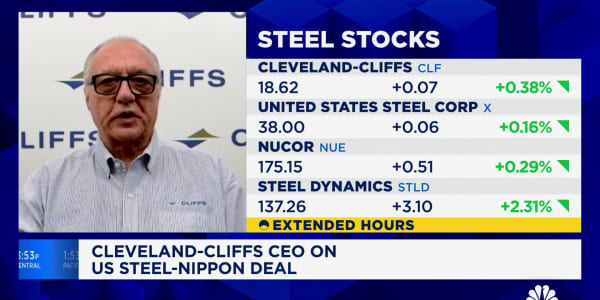Earlier, I pointed to a Washington Post op-ed by former investment banker turned Wall Street scourge William Cohan attacking the integrity of Mitt Romney. Basically, he called Mitt Romney and his Bain cohorts a bunch of jerks.
I want to follow this up with a personal confession: It wasn’t always Romney’s integrity or Bain’s greed that was causing the behavior to which Cohan objects. Sometimes, it was me.
At the heart of Cohan’s brief against Romney is what he claims was the chronic habit of Bain Capital, which Romney ran, of dodgy negotiating tactics when purchasing companies being sold by Wall Street investment banks.
Cohan complains that when investment banks would auction off companies, Bain Capital “did all that it could to game the system by consistently offering the highest prices during the early rounds of bidding — only to try to low-ball the price after it had weeded out competitors.”
Here’s how Cohan says that this worked:
By bidding high early, Bain would win a coveted spot in the later rounds of the auction, when greater information about the company for sale is shared and the number of competitors is reduced. (A banker and his client generally allow only the potential buyers with the highest bids into the later rounds; after all, you can’t have an endless procession of Savile Row-suited businessmen traipsing through a manufacturing plant if you want to keep a possible sale under wraps.)
For buyers, the goal in these auctions is to be one of the few selected to inspect the company’s facilities and books on-site, in order to make a final and supposedly binding bid. Generally, the prospective buyer with the highest bid after the on-site due-diligence visit is selected by the client — in consultation with his or her banker — to negotiate a final agreement to buy the company.
This is the moment when Bain Capital would become especially crafty.
In my experience — which I heard echoed often by my colleagues around Wall Street — Bain would seek to be the highest bidder at the end of the formal process in order to be the firm selected to negotiate alone with the seller, putting itself in the exclusive, competition-free zone. Then, when all other competitors had been essentially vanquished and the purchase contract was under negotiation, Bain would suddenly begin finding all sorts of warts, bruises and faults with the company being sold. Soon enough, that near-final Bain bid — the one that got the firm into its exclusive negotiating position — would begin to fall, often significantly.
From Cohan’s perspective as an investment banker involved in the auction process, this behavior on the part of Bain could only be explained by supposing that Bain people were particularly rapacious capitalists. A bit more Gordon Gekko than the other Gordon Gekkos.
The thing is, in my experience this kind of behavior was not unique to Bain. It was ubiquitous in private equity deals. It wasn’t only driven by the greed of private equity guys, it was also driven by the risk management practices of investment banks.
Investment banks were typically not just found on the side of the deal where Cohan worked, arranging for owners of companies to cash out to private equity firms. They were almost always on the other side of the deal as well, providing the cash the private equity firms would use to buy the companies.
Most private equity deals involve a large amount of debt. That debt is obtained either directly from banks, in the form of a leveraged loan, or with the help of banks underwriting a bond issuance.
Acquisition finance, as it is known, is what I worked on for most of my time as an attorney at two of the biggest law firms in New York City.
My clients were investment banks. While investment banks like the one Cohan worked for were holding auctions in which private equity firms would bid, the private equity firms themselves were holding auctions in which the lending arms of other investment banks would bid on the mandate to finance the deal.
We would stay up all night drafting commitment papers that spelled out how much we planned to lend, under what terms and conditions, what the escape clauses would be, and what the interest rates would be. We draft side letters about secondary issuances, carefully crafted to avoid tripping regulatory barriers. There’d be call after call discussing everything from the language for our material adverse change clause to how many types of leverage covenants we’d try to pack in.
All across Manhattan there would be conference rooms full of busy lawyers and bankers all doing exactly the same thing, all night long.
By dawn we would collapse back into our offices while the private equity guys chose which investment bank had won the deal.
During this stage, obviously, the private equity guys held all the cards and, to mix a metaphor, they enjoyed playing the investment bankers off each other.
Soon after the deal had been won — usually by whoever provided commitment papers with the loosest terms possible — we would begin to retrade. The bank would be given far more access to information about the company and this information almost always made the bank decide it needed to turn the screws a bit tighter. A previously unknown litigation risk would be discovered. A plant somewhere would turn up to have bad soil around it. Revenue projections would look too optimistic.
A lot of the risk in these deals was being taken by the banks. Often a very significant part of the purchase price was actually put up by the creditors. The loans were secured by the assets of the company being acquired but if we ever got stuck owning the company, that would be a disaster. So we cared a lot about managing the risk we were taking on with these loans. From the lending bank’s perspective, it often seemed like the private equity guys had been so eager to win the role of buyer that they had overlooked serious problems at the company.
Importantly, now that the lead bank in the deal had been assigned, the power dynamics had changed. My clients could start to claw back some of what they had given away in the commitment papers. Of course, there were serious limits to this. If you over-reached, you risked damaging your reputation. The private equity firms paid lots of fees to the investment banks, so we didn’t want them to decide doing business with our bank was too much of a hassle.
On more than one occasion, this process would result in the private equity firm having to go back to the sell-side investment bank to renegotiate part of its deal. After all, without the financing there was no deal. Sometimes the private equity guys were all too happy to let the lenders play the role of the bad guy.
Things really went off the rails between 2005 and 2007, when private equity firms and bank lenders stopped trying to renegotiate deals once the diligence process was underway. Credit was flowing out of banks at such a frantic pace, keeping up with the mania in M&A activity, that this system of shifting power and ongoing negotiations broke down. The result was astronomical acquisition prices funded by nearly covenant free—and largely diligence free—loans.
By that time I was out of the business. But my friends and former colleagues kept me up to date on the latest unraveling of once sacrosanct rules of lending. It was very clear that once you took out the people like me—the people who were paid to try to retrade on our commitments based on newly discovered information and resist the attempts of the private equity guys to water down our covenants—the financial system took on too much risk.
We might have been jerks. But we were necessary jerks.
My point is really that the leveraged acquisition business isn’t as simple as Cohan describes it. And the investment banks weren’t just on the selling side, waiting to be taken advantage of by private equity guys. They were on the lending side too, pressuring the private equity guys.
That three-way tug of war involving sellers, buyers and creditors might not have been pretty and it wasn’t always polite. But it was what made Wall Street work. When one side or another stops pulling on the rope hard enough, things go haywire.
Questions? Comments? Email us at
Follow John on Twitter @ twitter.com/Carney
Follow NetNet on Twitter @ twitter.com/CNBCnetnet
Facebook us @






